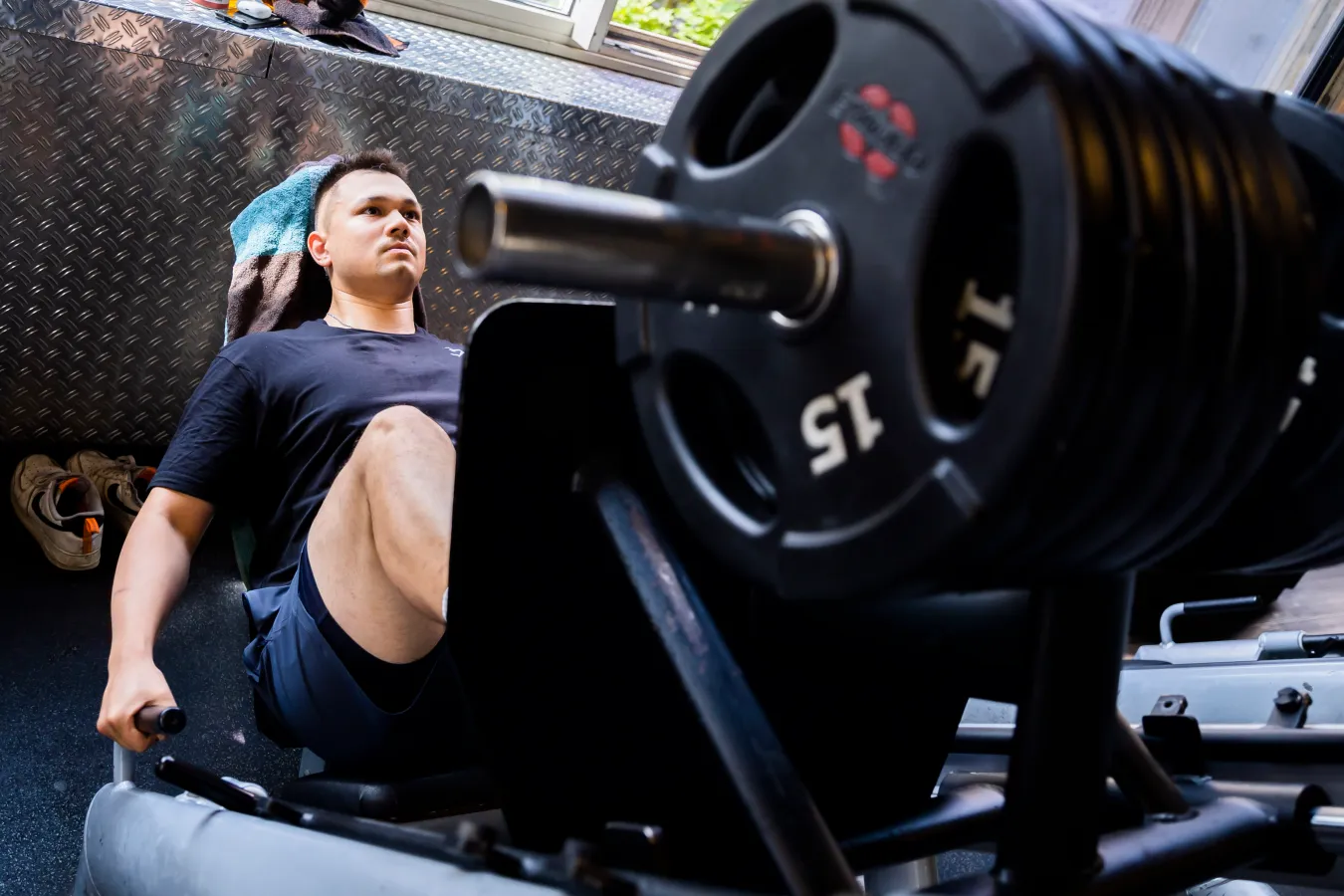Experts point out that creatine not only increases performance in a short period of time but also muscle volume and maximum strength.
Armin Stolle mixes a small spoonful of a white, odorless powder into his water bottle before training at a gym in Berlin. The 26-year-old quickly drinks the cloudy liquid and loads up a barbell. “I’ve been taking creatine for about nine months,” he says. Normally, the athlete trains on an American football team, but today it’s his turn to hit the weights.
“Five grams, mostly before training, and I also take it on non-training days,” Stolle continues, adding that all his football colleagues, but also many other sports-loving friends, do the same. And they are no exception: According to an American survey, 14 percent of the nearly 21,000 university athletes surveyed said they take creatine. If you take a look at social media, even among German fitness influencers, you get the impression that nothing works without the white powder. But what is it all about and is it safe to use?
“Creatine is first and foremost a substance that is produced naturally in the body. Unlike vitamins and minerals that we have to ingest with food, creatine can be produced by the human body itself,” says nutritionist Martin Smollich from the University Hospital of Schleswig-Holstein in northern Germany.
The expert points out that creatine is mainly produced in the liver and kidneys, and then stored in the muscles. “And this is where it has its most important effect. It serves to quickly provide energy to the muscle cells,” Smollich points out, adding that this is important during powerlifting or sprints, for example.
As the scientist explains, muscles can obtain energy from various sources, including sugar and fat, but the body needs more time to do so. As a result, says Smollich, creatine is not usually helpful during a long jogging session, for example.
In American football, you also have to be fast and strong. Creatine (not to be confused with the hair component keratin and the natural dye carotene) helps a lot, as Stolle explains between squats. “At some point, I reached my limits and then I started taking it. Now I am faster and stronger, I can lift more weight during exercises,” he says.
Maximilian Kleinert, an expert in muscle physiology and metabolism at the German Institute for Human Nutrition (DIFE), explains that creatine stores in muscle cells are usually up to 80 percent full and that the goal is to fill the stores to 100 percent when ingested. “We probably already have enough, but there is still a bit of room to grow,” he says, adding that with this energy cushion, athletes can lift weights one or two more times.
Smollich notes that creatine not only increases performance in a short period but also muscle volume and maximum strength. Its use in recreational sports, he continues, depends on personal goals, and is not always necessary. “But for those who say: ‘I want to have greater maximum strength and thicker biceps with my training’, creatine accelerates this process,” the nutritionist asserts.
Kleinert points out that the benefits are very small. “Of course, among Olympic athletes, that one or two percent can make the difference between a gold or silver medal. But for recreational athletes, I think it is more important to eat sensibly,” says the nutritionist.
Speaking of nutrition: Athlete Stolle also claims that he does not eat meat and therefore cannot absorb creatine from food. That is why he needs to take synthetic creatine. The Dife expert confirms this. “Creatine is found in relatively high concentrations in red meat and fish, and together with the body’s synthesis, a balanced diet covers our creatine needs,” he says, adding that it is interesting that vegetarians or vegans sometimes have lower levels in their muscles. However, Kleinert also notes that this is not a big problem in everyday life.
According to Smollich, Kleinert, and the European Food Safety Authority (EFSA), creatine is generally safe to take, and only people with pre-existing kidney disease should use caution.
According to Smollich, there is one group of people for whom regular creatine intake makes sense: people over 55, as they lose muscle mass more rapidly and intensively, and this is accompanied by a loss of functionality. “This means that older people can no longer climb stairs or go shopping with ease – they are simply physically weaker. In this case, creatine, together with weight training, can help maintain muscle mass for longer in old age – and thus functionality and quality of life,” explains Smollich.
The athlete Stolle is still far from this critical age. However, he does not plan to give up taking the magic powder.























+ There are no comments
Add yours